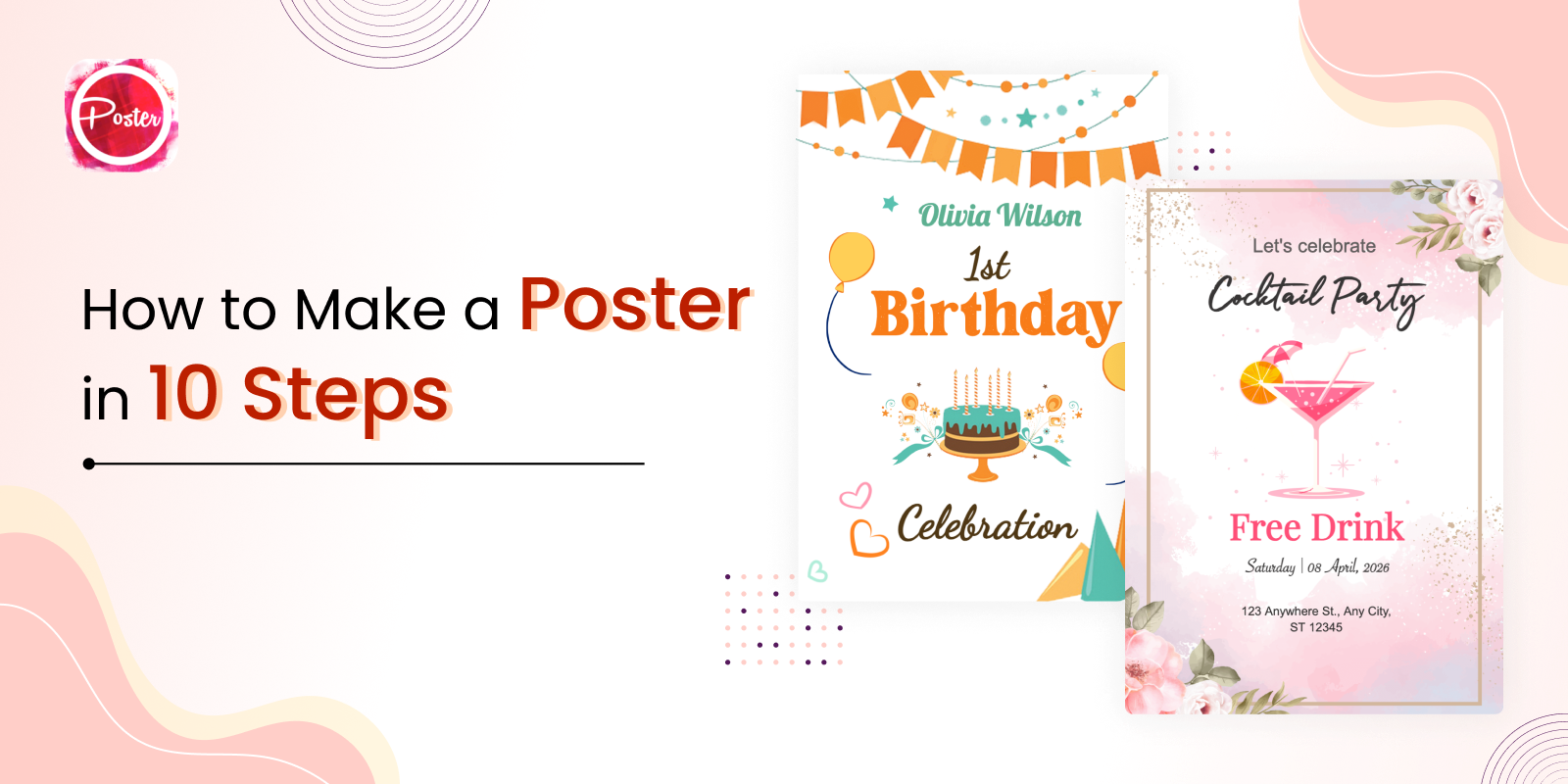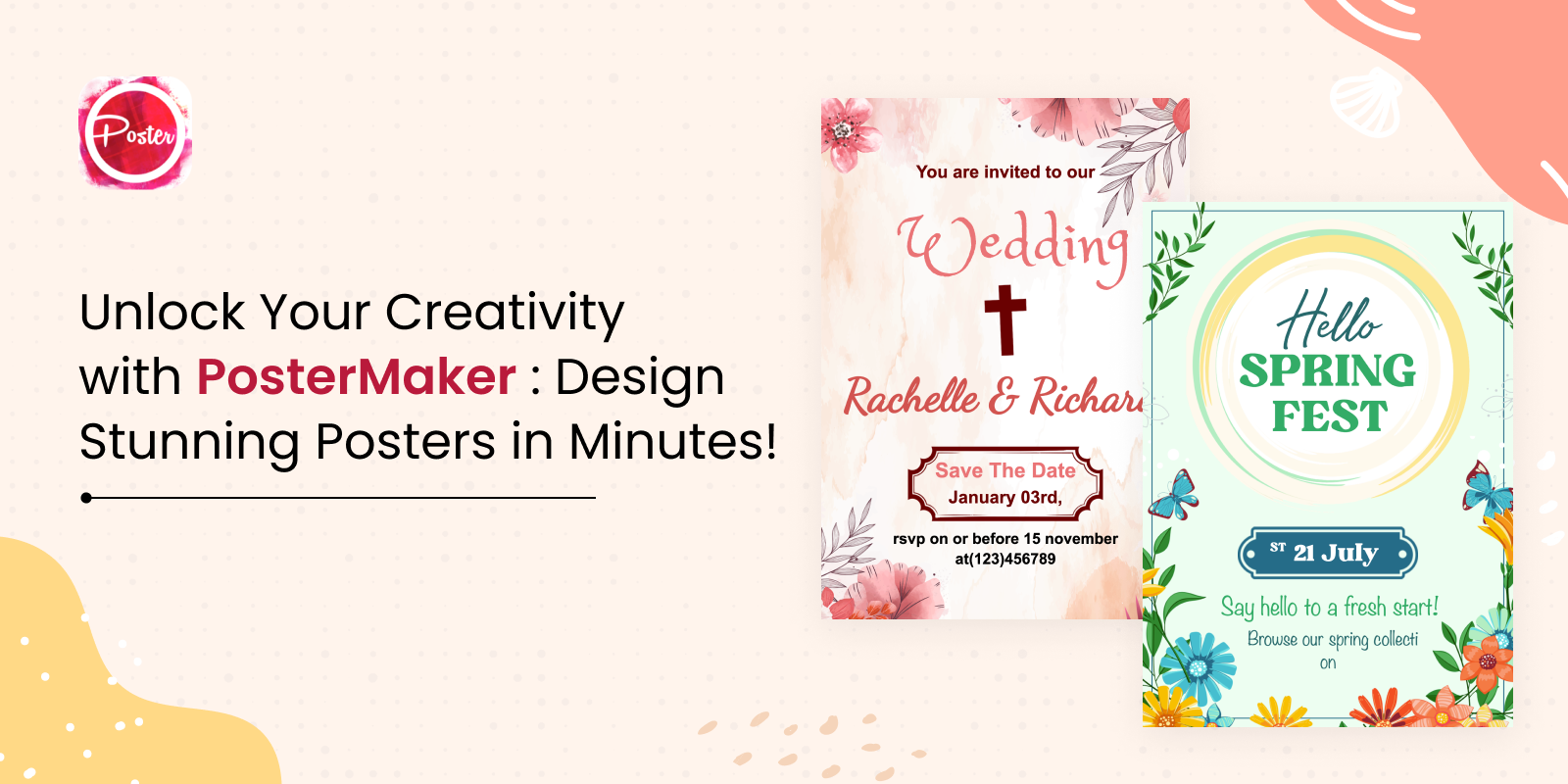In today’s fast-paced world, where visual communication plays a pivotal role, posters remain a powerful and versatile marketing tool. A well-designed poster can instantly capture attention, convey information, and evoke emotions, making it an effective medium for promoting products, events, or ideas. However, creating an impactful poster for marketing purposes is not as simple as putting together some images and text. It requires careful planning, creativity, and an understanding of the target audience. In this blog, we will explore the key elements of an effective poster maker marketing and the right way to create one.
Understanding Your Objectives:
Before diving into the design process, it’s crucial to define your marketing objectives clearly. What do you want to achieve with this poster? Are you promoting a new product or service? Is it for an upcoming event or a special offer? Understanding your goals will help you tailor the poster’s content and design to align with your specific aims.
Knowing Your Target Audience:
To create a successful marketing poster, you must know your target audience inside out. Who are they? What are their interests, needs, and pain points? Conducting thorough market research can provide valuable insights into your audience’s preferences and habits, allowing you to tailor the poster’s message and design to resonate with them effectively.
Simplicity is Key:
In the digital age, people are bombarded with information from all sides. To stand out, your poster needs to be simple and clear. Avoid cluttering it with excessive text or visuals. Instead, focus on a single, compelling message and use eye-catching visuals to support it. A clean and uncluttered design will make it easier for your audience to grasp the key information quickly.
Eye-catching Visuals:
Visuals are the heart and soul of any poster. Choose images or graphics that are relevant, high-quality, and attention-grabbing. A powerful visual can convey emotions and capture the essence of your message more effectively than words alone. However, ensure that the visuals complement your brand’s identity and resonate with your target audience.
Typography Matters:
Selecting the right typography is crucial for poster design. Use legible fonts that match the poster’s theme and overall aesthetics. Typography can enhance the visual appeal and reinforce the poster’s message. Avoid using too many font styles, as it can create a chaotic and unprofessional look.
Color Psychology:
Colors have a profound impact on human emotions and behaviors. Each color carries its own symbolism and meaning. Choose colors that align with your brand identity and evoke the desired emotional response from your audience. For example, red can signify urgency or passion, while blue can evoke a sense of trust and calmness.
Hierarchy of Information:
Organize the content on your poster using a clear hierarchy. The most critical information should be prominently displayed and easily noticeable. Use different font sizes, colors, and positioning to guide the viewer’s attention through the content in a logical manner.
Call to Action (CTA):
Every marketing poster should have a strong and compelling call to action. A CTA prompts the viewer to take the desired action, such as visiting a website, making a purchase, or attending an event. Make the CTA clear, concise, and visually prominent so that it stands out from the rest of the content.
Brand Consistency:
Your poster should be an extension of your brand identity. Maintain consistency in terms of colors, fonts, and overall style to reinforce brand recognition. Consistency helps establish trust and familiarity with your audience, encouraging them to engage with your marketing efforts.
Test Before Finalization:
Before mass-producing the poster, gather feedback from a diverse group of people, including members of your target audience if possible. A/B testing different versions of the poster can provide valuable insights into what elements are more effective and appealing. This information can help you make necessary adjustments to ensure the final design is as impactful as possible.
Incorporate Storytelling:
A great way to make your marketing poster more engaging is by incorporating storytelling elements. Humans are naturally drawn to stories, and using narratives in your poster can create an emotional connection with your audience. Whether it’s showcasing a customer success story, the journey of your brand, or the evolution of your product, storytelling can capture attention and leave a lasting impact.
Balance Text and Visuals:
Finding the right balance between text and visuals is essential. While visuals are powerful, some information may need to be conveyed through text. Be concise with your text, using punchy headlines and short, compelling messages. Avoid overwhelming the poster with text-heavy content, as it may deter the audience from reading it.
Consider Poster Placement:
Think about where your posters will be displayed and tailor the design accordingly. If they’ll be on busy streets or in crowded areas, opt for bold, attention-grabbing designs. On the other hand, if they’ll be in more relaxed settings like cafes or waiting rooms, you can use a more leisurely approach to catch viewers’ attention.
Size and Format Matters:
Choose the appropriate size and format for your poster based on its intended location and purpose. For example, large posters can be more visible from a distance, making them ideal for outdoor advertising, while smaller ones may be suitable for indoor displays or handouts. Consider different formats like vertical, horizontal, or square to match the poster’s content and design.
Utilize QR Codes:
Incorporate QR codes into your poster to bridge the gap between print and digital marketing. QR codes allow viewers to access additional information, promotions, or special offers by scanning them with their smartphones. This interactive element can enhance engagement and track the effectiveness of your poster campaign.
Highlight Benefits and Solutions:
Address the pain points of your target audience and highlight how your product or service can provide solutions and benefits. Focus on what sets your offering apart from competitors and why it’s valuable to your customers. People are more likely to respond positively if they can see how your poster’s message directly relates to their needs and desires.
Aim for Emotion:
Appealing to the emotions of your audience can be a powerful persuasion technique. Whether it’s humor, nostalgia, excitement, or empathy, tapping into emotions can create a memorable experience for the viewer. Use images, colors, and wording that evoke the desired emotional response and align it with your brand’s image.
Keep it Timeless:
While staying current and trendy is essential, strive for a design that can stand the test of time. Avoid using overly specific references or elements that might become outdated quickly. A timeless poster design can continue to be effective for years, saving you from frequent redesigns.
Test Different Design Elements:
Experiment with different design elements to find what works best for your audience. Test various color schemes, font combinations, layouts, and visuals to see which ones resonate most with your target demographic. Data-driven insights can help refine your poster design and make it more impactful.
Integrate Social Media:
Incorporate your social media handles or branded hashtags into the poster design. This integration can encourage viewers to connect with your brand online, expanding your reach beyond the physical poster. Additionally, user-generated content related to the poster can further amplify your marketing efforts.
Creating a compelling marketing poster requires a mix of creativity, understanding your audience, and aligning your design with your brand’s identity. By incorporating storytelling, maintaining balance between text and visuals, considering poster placement, and integrating interactive elements like QR codes, you can elevate your poster’s impact and make it a successful tool in your marketing arsenal. Our poster maker app fulfill your all the marketing requirements and you can create poster very easily. Remember to constantly test and adapt your designs based on feedback and data, ensuring your posters continue to capture attention and drive results.








